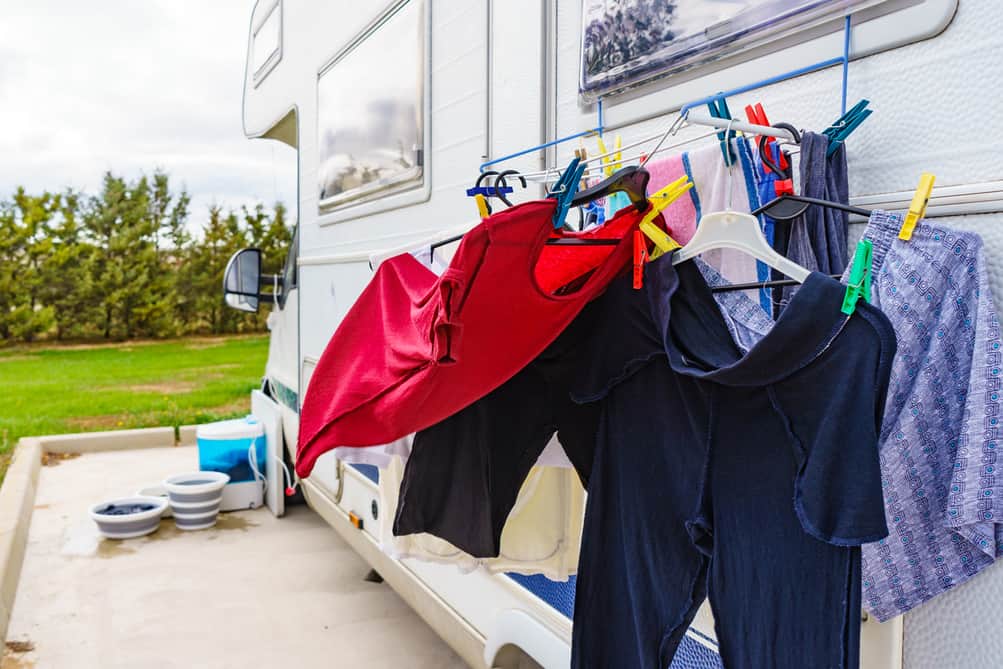Packing the right clothes for camping is the key to a comfortable, safe, and enjoyable trip—no matter the season or destination. This guide breaks down exactly what to bring, how to pack it, and includes expert tips plus helpful links to make your next camping adventure a breeze.
Key Takeaways
- Layering is essential: Always pack moisture-wicking base layers, insulating mid-layers, and weatherproof outer layers.
- Choose the right fabrics: Opt for synthetics or wool over cotton for better moisture management and comfort.
- Pack for the season: Adjust your clothing choices for summer, fall, winter, or spring conditions.
- Don’t forget accessories: Hats, gloves, rain gear, and extra socks are must-haves.
- Pack efficiently: Use rolling, packing cubes, and space-saving tips to fit more into your bag.
Why Clothing Matters for Camping
The right clothing keeps you warm, dry, and protected from the elements. It also helps you adapt to changing weather, terrain, and activity levels. Whether you’re car camping or heading deep into the backcountry, your clothing choices can make or break your experience.
For an extensive list of camping must-haves beyond clothing, see Tent Camping Must-Haves.
The Layering System: Your Clothing Foundation
Layering is the cornerstone of outdoor comfort. By wearing multiple layers, you can easily adjust your insulation and protection as the weather changes. Here’s how to build your camping wardrobe from the inside out:
Base Layer
- Moisture-wicking underwear and T-shirts (synthetic or merino wool)
- Long underwear for cold weather
Mid Layer
- Fleece jacket, insulated vest, or lightweight sweater
- Adds warmth and can be adjusted as needed
Outer Layer
- Waterproof and windproof jacket and pants
- Essential for rain, wind, and unpredictable weather
For expert advice on choosing sleeping gear that complements your clothing, check out How to Pick a Sleeping Bag.
Seasonal Packing Guide
Every season brings unique challenges for campers. Your clothing choices should reflect the expected weather and temperature swings. Use this table as a starting point, and adjust for your specific destination:
| Season | Essential Clothing Items | Notes |
|---|---|---|
| Summer | Moisture-wicking T-shirts/tanks, hiking shorts, lightweight pants, sun hat, swimsuit, light jacket | Protect skin from sun and bugs with long sleeves/pants; bring layers for cooler nights |
| Fall | Base layer, fleece jacket, insulated vest, long pants, beanie, waterproof jacket, sturdy boots | Layer up for chilly mornings/evenings; expect rain and temperature swings |
| Winter | Thermal underwear, fleece pants, down/synthetic jacket, insulated boots, gloves, scarf, beanie, rain gear | Multiple insulating layers; avoid cotton; prioritize warmth and dryness |
| Spring | Moisture-wicking base, fleece mid-layer, waterproof outer, convertible pants, sun hat, extra socks | Prepare for rain and fluctuating temps; insect protection may be needed |
For a tailored summer checklist, visit Summer Camping Essentials.
Footwear and Accessories
Choosing the right footwear and accessories is just as important as selecting your main clothing items. These extras will keep you comfortable, protected, and ready for any situation that arises at camp.
- Footwear: Sturdy hiking boots or shoes, plus sandals or camp shoes. Waterproof boots for wet conditions.
- Socks: Synthetic or wool socks; bring extra pairs.
- Headwear: Sun hat/cap for daytime, beanie for cold nights.
- Gloves and Scarf: Insulated gloves and a scarf or neck gaiter for cold weather.
- Rain Gear: Always pack a rain jacket and pants, even if rain isn’t forecasted.
Sleepwear and Special Considerations
Your sleepwear and a few special items can make a big difference in your comfort and preparedness, especially overnight or during specific activities.
- Dedicated Sleepwear: Clean, comfortable clothes for sleeping—like soft base layers or sweats.
- Swimsuit: For swimming or water activities.
- Bandana/Buff: Multipurpose for sun, sweat, or bug protection.
- CPAP Users: If you use a CPAP, learn How to Use CPAP While Camping.
Fabric Choices: What to Avoid and Why
Not all fabrics are created equal when it comes to camping. The materials you choose will affect your comfort, warmth, and ability to stay dry.
- Avoid Cotton: Cotton absorbs moisture and dries slowly, increasing discomfort and risk of hypothermia in cool weather.
- Choose Synthetics or Wool: These wick moisture, dry quickly, and provide insulation even when damp.
Packing Tips for Space and Organization
Efficient packing means you’ll have what you need without overloading your bag or car. A little organization goes a long way toward a stress-free trip.
- Roll, Don’t Fold: Rolling clothes saves space and reduces wrinkles.
- Use Packing Cubes: Keep items organized and maximize space.
- Versatile Clothing: Choose pieces that can be mixed, matched, and layered.
- Checklists Help: Use a Camping Shopping List to ensure nothing is forgotten.
For tips on fitting everything into your vehicle, see How to Fit Camping Gear in Your Car.
Expert Tips and Frequently Asked Questions
Even experienced campers have questions about packing clothing. Here are some of the most common concerns, along with expert advice to help you feel prepared.
How many outfits should I pack?
- For short trips, one outfit per day plus extra underwear and socks. For longer trips, pack fewer items and plan to re-wear or wash as needed.
What’s the best way to stay dry?
- Always bring a waterproof jacket and pants. Avoid cotton, and pack extra socks.
What if I’m camping off-grid?
- Prepare for remote conditions with the right clothing and Off-Grid Communication for Campers.
What about kids or family camping?
- Pack extra clothes for kids, prioritize layers, and bring spares for unexpected messes. See Tent Camping Must-Haves for family-friendly tips.
Conclusion
Packing the right clothes for camping is about preparation and flexibility. Focus on moisture-wicking layers, weather-appropriate outerwear, and versatile accessories. Use smart packing techniques to save space and stay organized. With the right clothing and preparation, you’ll be ready for any adventure nature throws your way.

Leave a Reply